
Intro
Good morning to all of the #Hive travelers!
Today I want to tell you about a beautiful trek that I did with my brother some time ago, as you will see from the photos the trees are still green and remind the beauty of summer that now in November I miss a lot.
But autumn is still a fantastic season, full of colors and emotions, so summer remains only a beautiful memory.... Let's start this trekking together! 😎

I will divide the trekking in two posts due to the high number of photos i took in every beautiful point of view that the nature that nature offered, it will be a real photo documentary 😎

You can see the route at the following link, I thank very much the site koomot.it that allows free to create and share routes between all lovers of this sport.
The application is made really well and can also be used in offline mode since very often in these contexts you do not have much field.
This application was fundamental to me because i didn't know the the path and guided me when the trails became more impassable and I couldn't tell which was the main way.

This is the point where the trekking started, i took this image from #Pinmapple and I reworked the following by taking the path on koomot.it
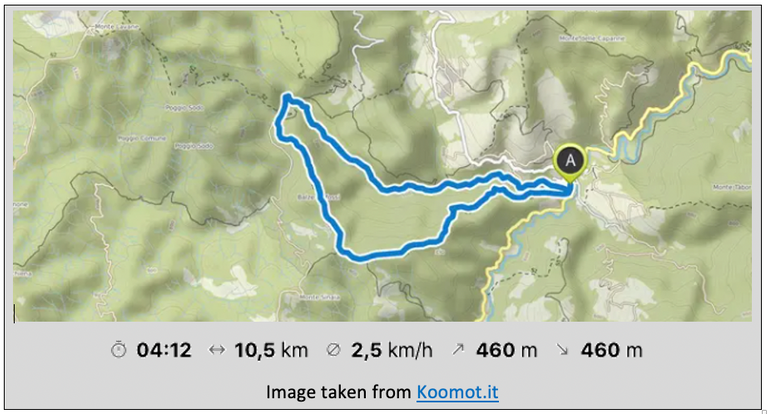
Editor's note: All of the photos you'll see in this post were made by me, exclusively for the #HaveYouBeenHere community, and for the amazing project of @pinmapple.
Let's start the walk
This route is very popular, especially in the summer months because along it you will encounter many cool shady areas and several streams, rivers and waterfalls where you can swim.
The important thing is to leave early in the morning, for me it is certainly not a problem.... I love getting up early in the morning, living with the sun, following in the day the awakening that begins at dawn and the sunset that represents the end of the day.

And there is nothing more beautiful than experiencing a day in the middle of the woods and nature, getting lost in it and forgetting all the stress of the week.

This is my car, parked in the early morning in a empty parking space, after a few hours of driving to the mountains we arrived in San Benedetto in Alpe, from here begins our journey into the heart of the park called "Foreste Casentinesi", a nature reserve between Emilia Romagna and Tuscany that represents a characteristic point of contact between the two regions.
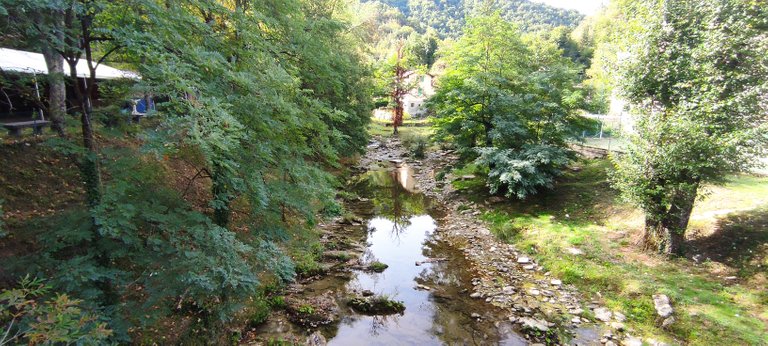
Here, in fact, it is possible to meet many people with a marked Tuscan accent, something that is immediately noticeable because it is very different from the Romagnolo accent.

The most characteristic point of this route is the Acquacheta Waterfall, really big and beautiful.
Unfortunately we couldn't admire the waterfall because in those days, as there was little water in the river, the waterfall was not active, but we saw another waterfall near there equally beautiful.

The Acquacheta river is the most important affluent of the Montone river (the main river that cross Emilia Romagna) and before reaching S.Benedetto in Alpe it makes a jump that is more than 70 meters high: the homonymous waterfall.
The waterfall was described by Dante in the XVI canto of the Inferno (94-102) and it is very famous for it:
«Come quel fiume c'ha proprio cammino
prima dal Monte Viso 'nver' levante,
da la sinistra costa d'Apennino,
che si chiama Acquacheta suso, avante
che si divalli giù nel basso letto,
e a Forlì di quel nome è vacante,
rimbomba là sovra San Benedetto
de l'Alpe per cadere ad una scesa
ove dovea per mille esser recetto;
così, giù d'una ripa discoscesa,
trovammo risonar quell'acqua tinta,
sì che 'n poc'ora avria l'orecchia offesa.»
-Dante Allighieri-
Inferno 94-102

It's possible to reach this waterfall only through an excursion of a couple of hours that goes up the valley reaching, just above the waterfall, the suggestive Piana dei Romiti with the ruins of the ancient village we will see in this post.


Our adventure starts from here, what you see is the image of the sign that represents the possible paths along the natural park, I tried to take the best I could the picture so that you can get an idea of the possible routes.

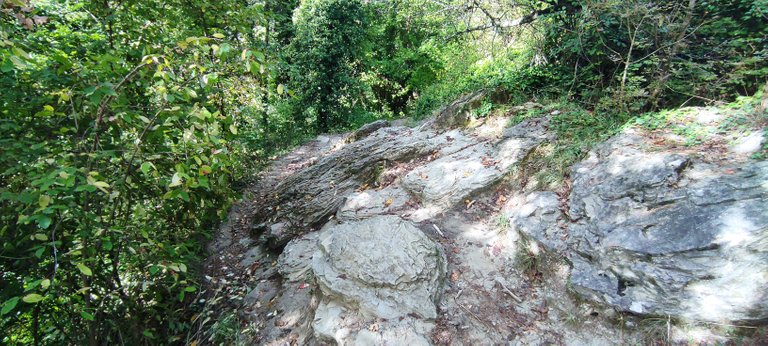
The first path that you take approaches near a river, with many plants also very rare, there are for example specimens of alder (Alnus glutinosa) whose name derives from "al han" term of Celtic derivation which means "near the water.
In the park these beautiful plants are grouped in small woods within the river valleys.


At this point we are near an ancient fluvial meander that has reached the final stage of silting and is filled during floods.

The black antler is a large tree, it can reach 25-30 meters, the foliage is conical in midi to optimize the reception of sunlight and has a very distinctive bark.
Its "lamina" leaves characterize it from many other trees in the area.
This particular type of tree is characteristic of this area, there are also other types of Antanus: the White Antanus (Alnus incana) and the Neapolitan Antanus (Alnus cordata).

Here we see the riverbed which was at a very low level during this day, surely if we return to this place now it will be difficult to be able to walk on the riverbed.




The route is mostly groomed but there are a few spots where the trail narrows and you have to walk through plants.
It is very nice to walk in the middle of nature, although you always have the doubt that you are on the right path.
There are also some very well made and maintained wooden bridges that allow you to easily cross the river at some points.
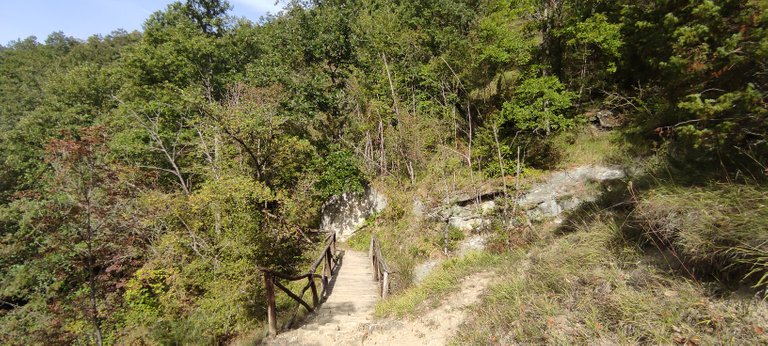
Completely immersed in nature... I recommend everyone to do some trekking every now and then is a perfect opportunity to immerse ourselves in the greenery and purity of life, here you can breathe fresh air and clean ... really a great thing.
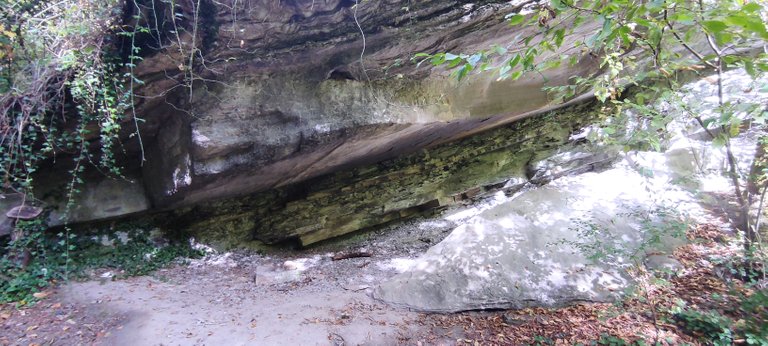
Another very nice aspect of this place is the open-air geological museum that is offered by the sandstones, marls and clays.
I've never been too interested in this kind of information, but I recognize that it's really fascinating.



Marls together with sandstones are very common rocks, they are sedimentary rocks that have been formed by sands, these formations may contain minerals of different types depending on their composition.
The formation of marls and sandstones occurs due to sand deposits and subsequent overbuilding under the action of the water that usually flows on the bed of a river thanks to the action of the wind and underwater currents.




In these points the river is really beautiful, as you can see there are many very small waterfalls, in which very fresh and very clean water flows.
This is a paradise for anyone who loves being in contact with nature.
There was no person other than us in these places, perhaps because it was still early.


At this point we see what are called "natural pools", small pools of water very characteristic that can be seen only when the river level is low, a true wonder of nature.

One of the most beautiful and quaint little bridges along the way, totally dipped in the nature.


It's truly stunning to be here surrounded by endless greenery, It's really wonderful to stay here surrounded by endless greenery, this atmosphere has the power to take you away from everyday life, away from stress and regenerates you completely.
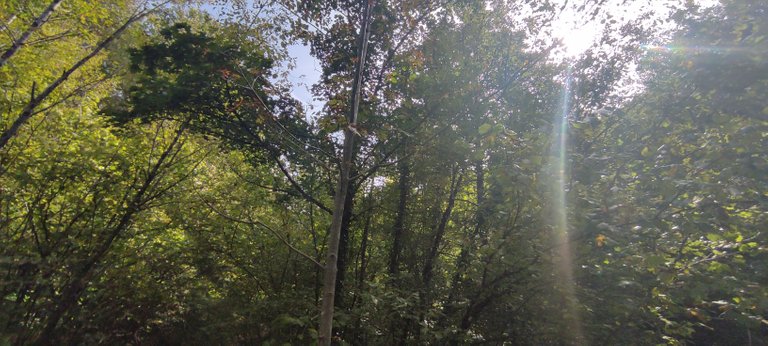
The light shines through the foliage of the trees and makes any view breathtaking.


The route requires a fairly high level of preparation, especially in the last part (which we will see in a later post); in fact, the paths here are well maintained and passable.


One thing that struck me very much are the shared shelters, there are stone houses in which those who pass can leave something to share with other travelers, inside the houses are in fact: food, drinks, blankets, etc. ... Anyone can take advantage of these things in time of need, anyone can leave something.



The walk runs along the river, it was very nice to be able to feel the cool water since it was very hot during those days.

This is me, really excited about the experience I was having.
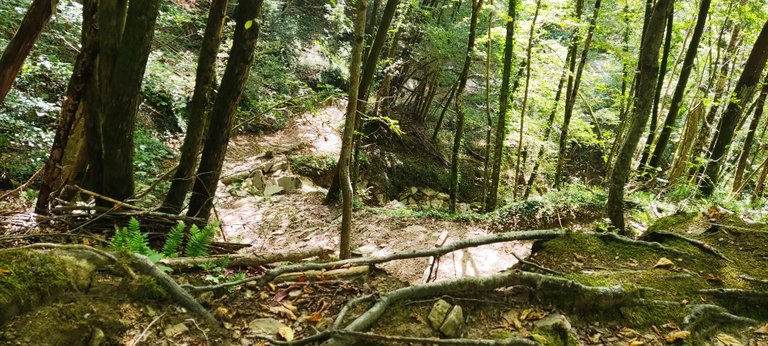



As we got closer to the falls, the trail began to get more difficult, as you can see the elevation changes begin to rise and you need to pay attention.




The Acquacheta valley has a great forest, even if it seems impossible 20 years ago in these points there was a clearing!
For many years the mountains surrounding the valley have been inhabited by the man who today has moved to the bottom of the valley.
The old glades, once abandoned, undergo a process of real rebirth of nature.



The vegetation, spontaneously, resumes its places, and therefore we find hawthorn, blackthorn, wild rose, juniper and finally, with the passing of the years also the trees return.



The mountain is regaining the appearance it had long ago before man intervened, changing the landscape.



The last stop before our break at the Lavane waterfall or "Fosso Cá del Vento".


Here it is! The Lavane waterfall, it's not as big as the Acquacheta one (which unfortunately was not active at that time) but it's really beautiful.
The water was frozen, I wanted to dive in but then I had to walk another 3 hours and I didn't want to feel wet.
Here we stopped and ate something, resting after a long walk.
It was necessary to get some energy back so we could complete our walk.
Conclusion

A truly unique experience, fantastic landscape that allows you to completely escape from everyday life.
In the next post I will show you also the return which is really beautiful, full of forests and endless fields.
We should do very often experiences like this and get lost in real life, that of nature, green and crystal clear water.
If you liked my post check my profile and my posts and add me to see more contents like this:

Congratulations @genta8! You have completed the following achievement on the Hive blockchain and have been rewarded with new badge(s):
Your next target is to reach 50 comments.
Your next target is to reach 100 upvotes.
You can view your badges on your board and compare yourself to others in the Ranking
If you no longer want to receive notifications, reply to this comment with the word
STOPTo support your work, I also upvoted your post!